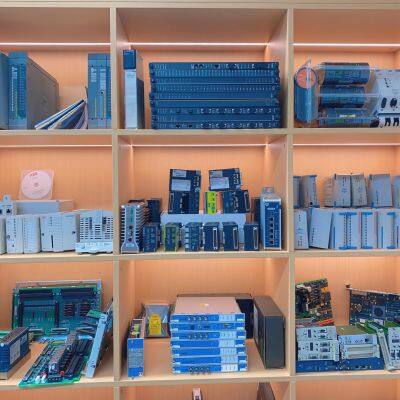Product Description
I. Overview
EPRO MMS6120 9100 - 00002C - 08 is a high-performance dual-channel speed monitor, which excels in the accurate measurement of equipment speed in industrial environments. Its affiliated brand, EPRO, has a long-standing reputation in the field of industrial monitoring and control. With profound technical accumulation and strict control over product quality, it has always been at the forefront of the industry. This monitor is designed to meet the speed monitoring needs of various industrial equipment and can be widely used in numerous industries such as petrochemicals, electric power, metallurgy, and natural gas processing, providing strong support for the safe and stable operation of industrial production.
II. Technical Parameters
Electrical Parameters
Input Voltage Range: The working input voltage range is set to 0 - 22VDC. This wide range allows the equipment to handle different power supply conditions with ease. Whether in conventional industrial sites with stable power supply or complex areas with potential voltage fluctuations, it can work stably, effectively avoiding faults caused by unstable voltage and ensuring the continuity of equipment operation.
Power Supply Voltage: It adopts a standard +24VDC power supply, which is highly compatible with most industrial power supply systems. Users can easily connect it to the existing industrial power network without additional complex voltage adaptation devices, providing stable power support for the reliable operation of the equipment.
Power Consumption: During normal operation, the power consumption of this monitor is at a low level. This not only conforms to the current industrial development trend of green energy conservation, effectively reducing energy costs for enterprises, but also low power consumption means less heat generation of the equipment itself, which can effectively extend the service life of internal electronic components. It is especially suitable for industrial scenarios with long-term continuous operation, reducing the probability of equipment failures caused by overheating.

Output Signal Types: It is equipped with various output signal types, including relay output and transistor output. Relay output can be used to drive high-voltage and high-current equipment, such as contactors and solenoid valves, meeting the control needs of high-power equipment; transistor output is suitable for high-speed switch control scenarios with extremely high response speed requirements, which can accurately and quickly achieve fast switching control, meeting the diverse needs of different industrial control objects for output signals, and greatly improving the versatility and application range of the product.
Physical Specification Parameters
Size and Structure: Adhering to the compact design concept, the overall size is exquisite. This design makes its installation and deployment in industrial control cabinets extremely convenient. Even in industrial control environments with limited space, it can be efficiently integrated without occupying too much valuable space. At the same time, its structural layout fully considers the connection and wiring needs with other equipment. Each interface is reasonably positioned, making cable connection easy and convenient, effectively improving the convenience of system installation, making the entire system wiring more regular, and reducing the risk of faults caused by messy wiring.
Material: The shell is made of high-strength and corrosion-resistant metal material. This material has excellent impact resistance, which can effectively resist accidental collisions that may occur in industrial sites and protect internal precision electronic components from damage. At the same time, its good corrosion resistance enables it to operate stably in industrial places with harsh environmental factors such as dust and moisture. It will not cause damage or rust to the shell due to long-term exposure to harsh environments, thereby affecting the normal use of the equipment, ensuring reliability and stability in complex industrial environments.
Control Parameters
Control Mode: It is built based on advanced Triple Modular Redundancy (TMR) technology. Under this technical architecture, three independent processors process the same input signal simultaneously and compare and vote on the operation results in real-time. This unique design significantly improves the safety and reliability of the system. When one of the processors fails, the other two normal processors can quickly pass the voting mechanism to ensure the output of correct control instructions, ensuring that the system can continue to operate stably in the case of partial component failures, meeting the strict requirements of industrial safety instrumented systems for high availability, and providing reliable control guarantees for key links in the industrial production process.
Processing Speed: The processor has an extremely fast operation speed, capable of processing a large number of input signals in a short time and quickly calculating complex control logic. This enables the equipment to respond quickly to abnormal situations in the industrial process, greatly shortening the system response time. In industrial production, time is related to safety and efficiency. The fast processing speed can take control measures in time at the moment of danger, avoiding the expansion of accidents and building a solid defense line for safe production.
Communication and Interface Parameters
Communication Interfaces: It is equipped with a variety of communication interfaces, among which Ethernet interface and RS - 485 interface are particularly prominent. The Ethernet interface supports high-speed data transmission, enabling fast and stable data interaction with upper computers and monitoring systems, facilitating remote real-time monitoring and management of equipment. It is suitable for modern industrial production scenarios with high requirements for data transmission speed, such as centralized monitoring and management systems in large factories. The RS - 485 interface is suitable for short-distance communication with other on-site equipment and supports common communication protocols such as Modbus. This enables the equipment to achieve seamless data interaction with on-site equipment of different brands and models, easily integrating into the existing industrial automation system, greatly improving the integration and compatibility of the system, and reducing the difficulty and cost of system integration.
I/O Interface Capacity: It provides a certain number of digital input/output interfaces and analog input/output interfaces, which can meet the basic needs of signal acquisition and control in small and medium-sized industrial control scenarios. At the same time, the equipment supports increasing the number of I/O interfaces through expansion modules. Users can flexibly expand the I/O interfaces according to the needs of actual application scenarios. For example, when the production scale expands or the process is improved and more sensors, actuators and other equipment need to be added, the number of I/O interfaces can be conveniently expanded by adding expansion modules, enhancing the adaptability and scalability of the system, and ensuring that the equipment can continuously meet new needs with the development of industrial production.

III. Functional Features
High Safety and Reliability
Redundancy Design: In addition to the core Triple Modular Redundancy (TMR) structure, redundancy design is also adopted in key parts such as power supply and communication. In terms of power supply, when the main power supply fails, the standby power supply can automatically switch to operation in a very short time, ensuring that the equipment will not stop working due to power interruption and maintaining the continuity of the industrial production process. In terms of communication, once the main communication link is interrupted, the redundant communication interface will quickly take over the communication task, ensuring that data interaction between the equipment and other systems is not affected, minimizing the impact of faults on production, and providing all-round guarantees for the stable operation of industrial production.
Fault Diagnosis and Alarm: It has a powerful and complete online fault diagnosis function. It can monitor the operating status of various components inside the system in real-time and accurately, including key components such as processors, memories, and I/O modules. Once any fault is detected, the equipment will immediately send a clear and definite alarm signal, display the fault information intuitively through the display screen, and quickly send a detailed fault report to the upper computer through the communication interface. This enables maintenance personnel to obtain fault information at the first time, carry out troubleshooting and handling in a timely manner, greatly shortening the equipment downtime, and improving equipment availability and production efficiency.
Flexible Programming and Configuration
Programming Software Support: It supports program development and configuration using EPRO's dedicated programming software. The software has rich function blocks and convenient programming tools, allowing engineers to flexibly and efficiently write control logic according to different industrial control needs. Its programming method is simple and intuitive. Experienced professionals can give full play to their professional skills to quickly realize complex control functions; novice engineers can also get started quickly, reducing learning costs and improving development efficiency.
Online Modification Function: The software supports online modification of programs and parameters, which greatly enhances the flexibility and maintainability of the system. In the industrial production process, if it is necessary to adjust the equipment control logic or operating parameters according to the actual production situation, there is no need to stop the system operation. Engineers can directly modify the programs and parameters in the running state, and the equipment can respond immediately and operate according to the new settings, avoiding production interruption caused by shutdown modification, improving production efficiency and reducing production costs.
Strong Anti-Interference Ability
Anti-Interference Measures: To cope with the complex and changeable electromagnetic environment of industrial sites, the equipment adopts a variety of advanced anti-interference measures. Among them, photoelectric isolation technology is applied between input and output signals and internal circuits, which can effectively block external electromagnetic interference from entering the system through signal lines and protect internal circuits from interference. At the same time, the filter circuit design can effectively filter out noise on power supplies and signal lines, ensuring stable transmission of input and output signals, reducing signal distortion and interference, enabling the controller to work reliably in the complex electromagnetic environment of industrial sites, and ensuring that the system control accuracy and stability are not affected by interference.


EMERSON A6500-CC 9199-00120 Communication Card
ROCKWELL T8830 Trusted 40 Channel Analogue Input FTA
ROCKWELL T8800 Trusted 40 Channel Analogue Input FTA
ROCKWELL T8800C PD8800 PCB130100 Trusted 40 Channel Analogue Input FTA
FOXBORO RH101AA High-Performance Pressure Transmitter
WOODWARD 5437-1067A Speed Control Plate
Bently Nevada 289761-01 Emergency Shutdown Device (ESD)
Bently Nevada 3701/55 Emergency Shutdown Device (ESD)
Bently Nevada 136719-01 Earthing I/O Module
Bently Nevada 135785-01 System Display
Bently Nevada 3500/91 EGD Communication Gateway Module
Woodward 8200-1508 Digital Control Module
 yezi
Hi there! Welcome to my shop. Let me know if you have any questions.
yezi
Hi there! Welcome to my shop. Let me know if you have any questions.




